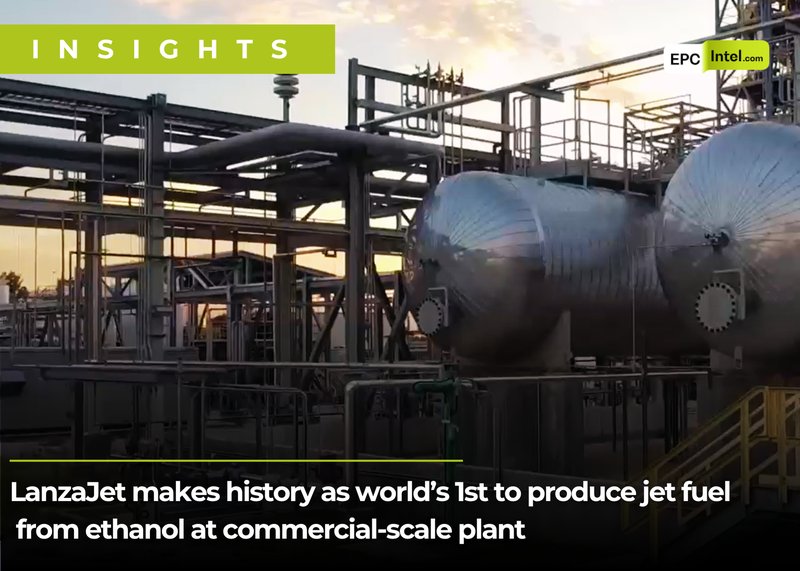The global aviation sector has been waiting for its next real step change in sustainable fuels. This week, it finally arrived in rural Georgia. LanzaJet has moved its Freedom Pines Fuels plant from the long march of R and D into fully integrated commercial operation, proving that ethanol can be converted into jet fuel at scale and at specification. For an industry boxed in by limited HEFA feedstocks and tightening policy timelines, this is the moment many have been waiting for.
LanzaJet’s breakthrough is more than a technology milestone. It is the first credible commercial scale demonstration that the next wave of SAF production will not rely on waste fats and oils. ATJ ethanol, once considered experimental, has crossed the threshold into bankable industrial production. In EPC terms, this marks a pivot point where a new asset class begins to replicate at pace.
Technology blueprint ready for replication
Freedom Pines acts as a first of a kind template that LanzaJet wants to copy and paste globally. The facility integrates LanzaJet’s proprietary Alcohol to Jet process with two other first time industrial technologies: Technip Energies’ Hummingbird process for ethanol to ethylene conversion, and an oligomerization unit co developed by the US Department of Energy and LanzaTech. LanzaJet did not simply license the technology suite. It engineered it, integrated it, and commissioned it as a unified commercial plant.
Construction absorbed more than USD 300 million of capital and required over 300 craft and specialist personnel at peak. Ongoing operations support more than 65 direct and indirect jobs. For EPC contractors and process licensors, what matters is that a full ATJ train is now proven across the electrical, mechanical, catalytic, and integration envelopes. The FOAK gremlins have been worked through. The learning curve now begins to compound.
EPC and supplier landscape
EPCIntel.com‘s reference data on comparable biofuels complexes suggests a typical capital distribution for a facility of this size would break out approximately as follows:
• Process units including ATJ reactor systems, dehydration, oligomerization, and fractionation: 35 to 40 percent of total installed cost
• Equipment packages including reactors, compressors, pumps, heat exchangers, and control systems: 20 to 25 percent
• Utilities and offsites including steam, power distribution, flare, wastewater, and tankage: 15 to 20 percent
• Civil, structural, and architectural works: 10 to 15 percent
• Electrical and instrumentation: 8 to 12 percent
• Construction indirects and commissioning services: 10 to 12 percent
Within the process island, the differentiators are the Hummingbird catalyst package and the integrated ATJ synthesis train. For future projects, these will anchor the procurement strategy. Oligomerization and fuel finishing lines are likely to see the fastest cost compression as replication grows.
For EPC contractors, the opportunity set expands quickly once volumes scale. A single ATJ facility of Freedom Pines size tends to generate between USD 150 million and USD 250 million in major equipment orders across reactors, skids, columns, compressors, fired heaters, and electrical gear. Balance of plant adds similar magnitude across civil, pipeline, and storage packages.
Why ethanol changes the game
LanzaJet’s argument is simple. Ethanol is abundant, globally distributed, and increasingly produced from waste sources. While HEFA feedstocks are hitting a natural ceiling, ethanol can be produced in almost every major agricultural region and even from municipal waste and captured carbon. The ATJ pathway therefore unlocks domestic SAF production for countries that lack ready access to lipids but hold substantial biomass or bio waste streams.
This matters deeply for energy security. Governments want domestic supply chains. Airlines want price stability. Developers want predictable feedstock strategies that lenders will support. Ethanol ticks all three. LanzaJet’s technology does the rest.
Global roll out begins
LanzaJet has positioned Freedom Pines as the beachhead for a rapid international expansion cycle. The company is already in active deployment or project development across the United States, Australia, Japan, India, the United Kingdom, Colombia, the European Union, the Middle East, and Kazakhstan. Each region has ethanol supply availability, policy support, or both.
EPC contractors familiar with biofuel projects are already circling. Expect dual lead EPC models, with local contractors delivering civil and utilities packages and global players taking the process islands. Early ATJ projects could mirror the early LNG modular rollout of the 2000s in terms of contracting structures and replication strategy.
A rare aviation milestone
LanzaJet CEO Jimmy Samartzis described the project as a beacon of hope. That may sound lofty, but in aviation context he is not exaggerating. Few technologies reach commercial operation in this sector. Fewer still define new categories of industrial buildout. ATJ ethanol has now joined that small club.
For EPC players, the takeaway is clear. A new SAF technology class is real, proven, and ready to replicate. For ethanol producers, a new premium market has arrived. For investors, the FOAK has run, and the project finance conditions for the next wave are now materially stronger.
Freedom Pines is no longer a promise. It is an operating plant. And that changes everything.




